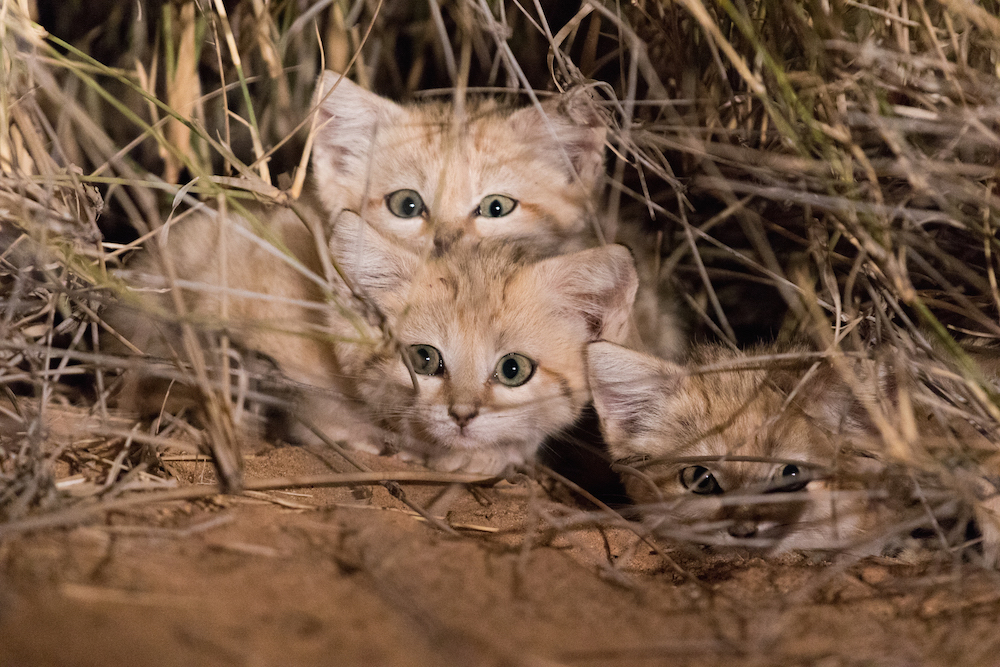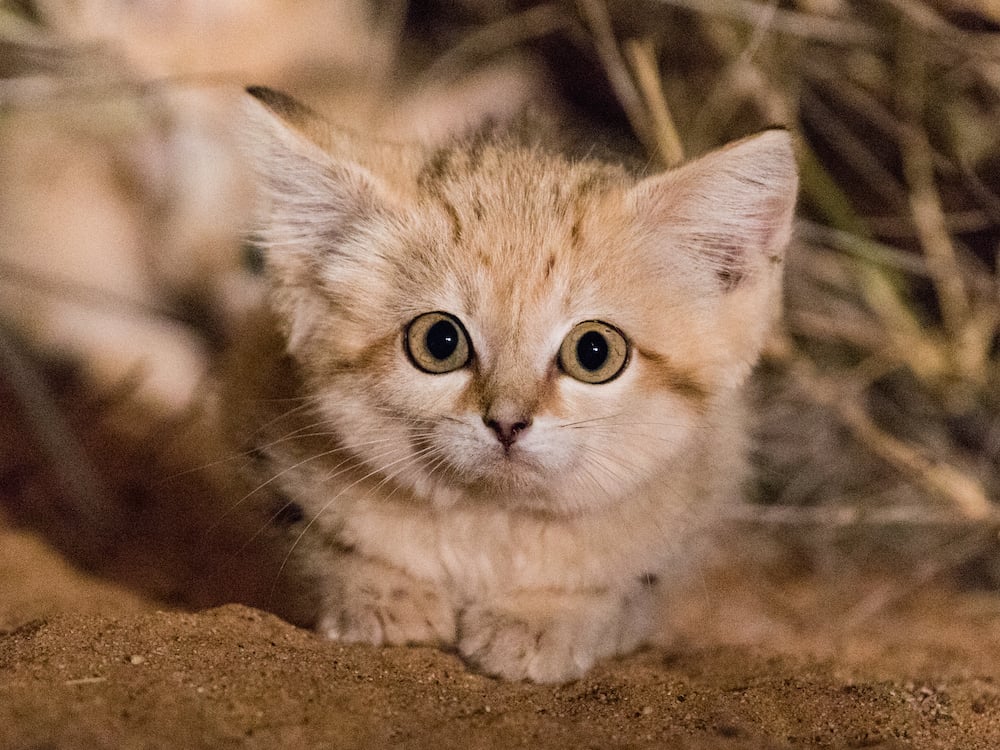
In late September, Gregory Breton and his team were returning to their campsite after spending seven long hours scouting the hot, dusty, Moroccan Sahara for sand cats. Suddenly, just four kilometers away from their destination, they noticed three pairs of gleaming eyes. Upon getting closer, the researchers realized they had stumbled upon something that, to their knowledge, had never been encountered in the wild before – sand cat kittens!
Breton, who works with Panthera, a non-profit organization devoted to conserving the world’s 40 wild cat species and their ecosystems, says finding the felines is not easy. That’s because the stealthy animals that are most active at dusk, night, and dawn are extremely good at hiding and have the perfectly colored fur to help them blend in with their environment. The cats also leave behind no visible pugmarks or prey remains, making them extremely hard to track.
Though the kittens that the researchers found were too young for radio-collars, the team did manage to put a tracking device on an adult female sand cat, possibly the mother, that was also discovered in the area. Breton, who outlined the discovery in his blog, writes, "If we collect footage of her and follow her for a long period, we can gather data on the natural reproduction cycles and offspring dispersal of this species in the wild - all topics never before documented."

Though they may look frail, sand cats, which possess slightly broader faces and bigger ears than domestic cats, are hardy animals. Endemic to northern Africa, the Middle East and southwest and central Asia, the animals endure the desert’s wild temperature fluctuations by digging burrows in the sand or taking shelter beneath rocks and shrubs during the day. The adept hunters obtain most of their moisture from their prey, which includes rodents like mice and gerbils, as well as small birds, lizards, and snakes.
Resources: Panthera.org, earthtouchnews.org